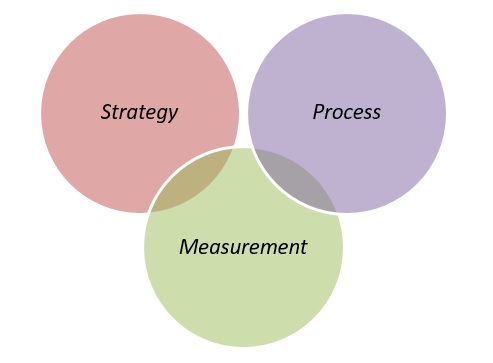
Organizations need bright ideas to spur innovation and remain competitive. But where do these ideas come from?
Systematic idea management is a process for capturing bright ideas from employees and turning them into business value. It begins with a clear understanding of what an organization is trying to achieve and then creates an approach for setting strategy, implementing processes, and measuring success.
Successful employee ideas campaigns require buy-in from top leadership, middle managers, and front-line employees. It also requires a clear understanding of the organization’s business objectives and a willingness to embrace change.
According to verifiedmarketresearch.com, Idea Management Software Market was valued at USD 776.03 Million in 2019 and is projected to reach USD 1.99 Billion by 2027, growing at a CAGR of 12.53 % from 2020 to 2027.

As a leader, are you interested in learning more about how to create a systematic approach to capturing the bright ideas of your employees? Then read on further to gain more insights!
In addition, you can also learn more modern and innovative leadership skills or effective ways to grow your business ideas with our recommended professional diploma in train the trainer course as well. Now, let get dive into the topic for which you are here.
What is Idea Management?
Idea management is a systematic process for capturing the ideas of all employees, from the top leadership on down and turning them into value for the organization.
The idea management process starts by defining what the organization is trying to achieve and then sets a strategy, implements processes, and measures success. Idea management helps to foster a culture of innovation. It allows every employee to bring forward their thoughts, regardless of their level in the organization.
This makes it easier for ideas to come to light that might otherwise have never been pursued. The process also helps to identify the right people to bring ideas to fruition, which can significantly speed up the development process.
The 3 Pillars of Idea Management
Idea management rests on three main pillars: strategy, process, and measurement.

First and foremost, the organization must have a clear approach for setting strategy in order to create an effective idea management system. This includes understanding the goals and objectives of the organization and setting a plan for achieving them.
The second pillar is Process. The organization must have a clear idea of how and where ideas will be captured and acted upon. This includes understanding the roles and responsibilities of those involved and creating a platform for employees to submit their ideas.
The last pillar is Measurement. It’s important to measure the outcomes of an idea management system in order to ensure it’s producing the intended result. This should include both qualitative and quantitative metrics that measure the impact of the ideas on the organization’s performance.
Creating a Systematic Approach to Idea Management
Creating a systematic approach to idea management involves setting up a process that encourages employees to think outside the box and submit their ideas for consideration. This starts with:
The first step in creating an effective idea management system for a successful employee ideas campaigns is to establish a process for submitting ideas. This can include setting up online forms, setting up email addresses, or installing software for employees to submit their ideas. It is important to make the process as easy and seamless as possible as this will encourage more participation and engagement from employees.
To motivate your employees to submit ideas, consider offering incentives such as recognition and financial rewards for the best ideas. Additionally, it’s important to provide clear guidelines for submitting an idea, such as requirements for the structure and format of the idea and deadlines for submissions.
In addition to setting up a system for collecting ideas, it is important to foster a culture of idea generation. To do this, organizations should focus on creating an environment of brainstorming and collaboration.
This can be done through team-building activities, idea-focused events, and internal competitions. It is also important to make sure everyone feels comfortable sharing their ideas by emphasizing the importance of positive feedback and encouraging constructive criticism when necessary.
Once you have a process in place for collecting ideas, it is important to organize those ideas by project or by other criteria that make sense for your organization. The goal is to categorize the ideas in order to make it easier to review and prioritize them. This can be done through manual filing or through more sophisticated approaches such as using software applications to store and manage ideas.
Once the ideas have been collected and organized, it is time to evaluate and prioritize them. This evaluation process should be done systematically and should include criteria such as potential impact, cost/benefit analysis, feasibility, and risk. This process should also involve feedback from relevant stakeholders in order to ensure the best ideas are chosen.
Once the ideas have been evaluated and prioritized, it is time to implement the best ones. This is arguably the most important step in the idea management process and one of the best successful employee ideas campaigns as it is the step that will bring the ideas to life. It is important to ensure the implementation process is well-thought-out and has been properly planned for, as this will ensure the best chance for success.
Finally, it is important to monitor the progress of the implemented ideas and to track the results. This can be done through a variety of tools such as dashboards, ongoing surveys, focus groups, and performance metrics. Doing so will allow you to measure the success of the implemented ideas and identify any areas that need to be adjusted or improved.
Final Thoughts
Creating a successful idea management system requires an organization to define its goals, clear approach for setting strategy, create a platform for employees to submit their ideas, give incentives for participation, and track the outcomes of the system. It’s a complex but necessary process that can lead to improved innovation and performance. By following the steps outlined above, organizations can create an effective idea management system and start to reap the rewards of their employees’ ideas.
In case, if you’re an aspiring trainer or a business leader who wants to grow your business to the next level then we do recommend our Professional Diploma in Train the Trainer which will definitely help you to achieve your goals.
Written By : Victoria Lewis
Centre For Training & Professional Development (CTPD) - The Trading brand of TTA Training Private Limited, India is a ISO 9001:2015 Company




© 2021 - Centre For Training & Professional Development (CTPD). All Rights Reserved. Centre For Training & Professional Development (CTPD) trading brand of TTA Training Pvt. Ltd (India) - CIN U80902WB2016PTC215839, Asia Teachers Training Co., Ltd (Thailand) - Registration No. 0105558193360 & Asian College Of Teachers Ltd (UK) - Company Number 9939942 & Asian College Of Teachers LLC, (USA) - Federal Tax Identification Number 30-1261596
Designed by kreativewebtech